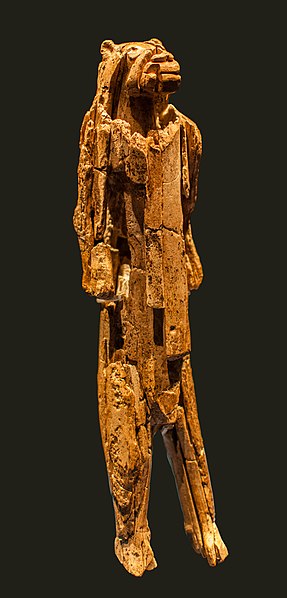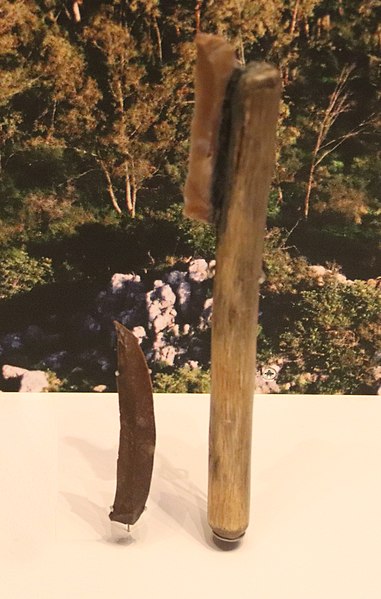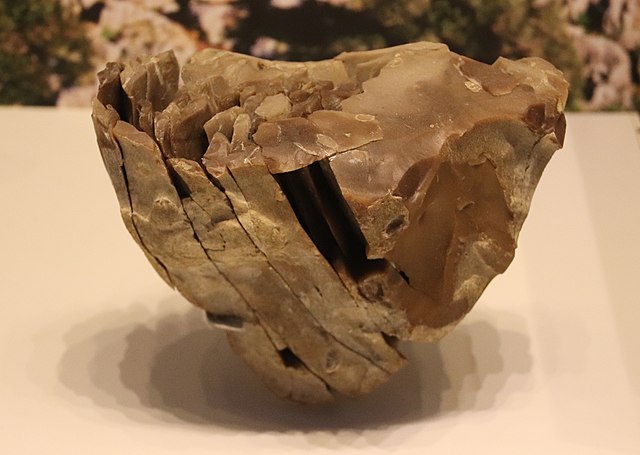In archaeology, the Epipalaeolithic or Epipaleolithic is a period occurring between the Upper Paleolithic and Neolithic during the Stone Age. Mesolithic also falls between these two periods, and the two are sometimes confused or used as synonyms. More often, they are distinct, referring to approximately the same period of time in different geographic areas. Epipaleolithic always includes this period in the Levant and, often, the rest of the Near East. It sometimes includes parts of Southeast Europe, where Mesolithic is much more commonly used. Mesolithic very rarely includes the Levant or the Near East; in Europe, Epipalaeolithic is used, though not very often, to refer to the early Mesolithic.
Epipalaeolithic stone mortar and pestle, Kebaran culture, Epipaleolithic Near East. 22000-18000 BP
The Epipaleolithic corresponds to the first period of progressive warming after the Last Glacial Maximum. Evolution of temperatures in the Post-Glacial period according to Greenland ice cores.
Microliths tools from Ein Qashish South, Jezreel Valley, Israel, Kebaran and Geometric Kebaran, ca. 23,000-16.500 BP
The Ain Sakhri lovers, Ain Sakhri near Bethleem, Israel. Kebaran culture, Late Epipaleolithic Near East
The Upper Paleolithic is the third and last subdivision of the Paleolithic or Old Stone Age. Very broadly, it dates to between 50,000 and 12,000 years ago, according to some theories coinciding with the appearance of behavioral modernity in early modern humans, until the advent of the Neolithic Revolution and agriculture.
Löwenmensch, a prehistoric ivory sculpture discovered in Hohlenstein-Stadel, c. 40,000–35,000 years old
Expansion of early modern humans from Africa
Flint Knives, Ahmarian Culture, Nahal Boqer, Israel, 47,000–40,000 BP. Israel Museum.
Stone core for making fine blades, Boqer Tachtit, Negev, Israel, circa 40,000 BP








